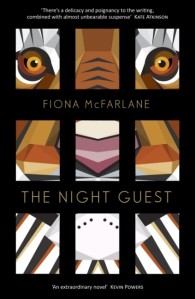Fiction – paperback; Sceptre; 266 pages; 2019.
The cover of my edition of Anne Griffin’s When All is Said claims it is an international bestseller. I can see why.
This is a delightful and entertaining tale about an old man looking back on his life in rural Ireland, a man who came from nothing, struggled with dyslexia and reinvented himself as a farmer with an eye for property acquisition.
It shows how the course of his life was altered by a single act in his childhood involving a rare gold coin, an act that binds him to the owner forevermore.
An evening in the bar
The novel is set on a single evening, in the bar of a grand hotel, and is split into five parts. Each part is a toast dedicated to a person who played an important role, whether for good or bad, in 84-year-old Maurice Hannigan’s life.
7.05pm
First Toast: to Tony
Bottle of stout
Over the course of the evening, interspersed with wonderfully amusing details about the hotel and its young landlady owner, we learn about Maurice’s upbringing and the relationships he had with his older brother, his wife Sadie, his two children and his sister-in-law. It’s a typical life in the sense that it’s filled with births, deaths and marriages, ups and downs, tragedies and small triumphs.
But for all the charm and witticisms Maurice displays as he relays his life story, there’s an undercurrent of unease. On more than one occasion I wondered if others actually liked him? Was he petty? Perhaps even sly and cruel? For throughout the tale Maurice holds a grudge, and a deeply felt one at that — and it’s largely about that aforementioned coin.
A lifelong grudge
This is how the grudge came about. When Maurice’s headmaster advised him to leave school, aged 10, because he struggled to read and write — thanks to what was clearly a case of undiagnosed dyslexia — he went to work for the Dollards, a Protestant family in a Big House, where his mother was already employed in the kitchen.
Maurice did odd jobs around the farm but was subjected to terrible beatings and bullying, mainly by the Dollards’ son, Thomas, who was of a similar age.
Quicker than I thought possible, Thomas was there at my back, a hunting crop in his hand. As I turned, he struck me with it, the metal slicing into my cheek. When I fell to the ground holding my face, he kicked my stomach again and again and again.
Maurice gets to avenge these ongoing cruel acts several months later when he scoops up a gold coin that Thomas has flung out an upstairs window as part of a fight with his father. No one sees Maurice take the coin which turns out to be an exceedingly rare gold sovereign produced when King Edward VIII was on the throne but removed from circulation upon his abdication in 1936. The coin is so rare that its loss costs Thomas his inheritance — and later his sanity.
(Side note: the coin, it turns out, isn’t fictionalised. Only six were produced, making them one of the rarest British coins in existence. Google tells me that the Royal Mint dubbed it the “coinage that never was” because it was pulled from production when King Edward VIII abdicated to marry American divorcee Wallis Simpson. One of these coins sold at auction in 2020 for £1 million. More about the coin here.)
Reading treat
When All is Said is a real treat to read. The author achieves a careful balancing act, preventing the narrative from heading into either sentimental or maudlin territory. It is tender, frank and endearing.
Maurice’s voice is brilliant — it’s intimate, moving, funny and all too human. You do feel like you are sitting at the bar with him, listening to him tell his tale. He’s a flawed character but he recognises his flaws. When he apologises to his son for not being a good father — “I know, really I do, that I could’ve been better” — you know he means it.
I’m not sure you could describe When All is Said as a “feel good” book, but it’s certainly a warm and witty one, the kind of tale that makes you appreciate a life well lived. It is masterful storytelling.













